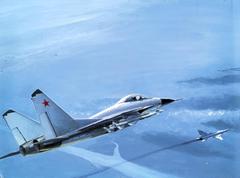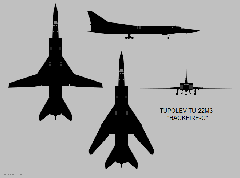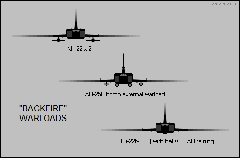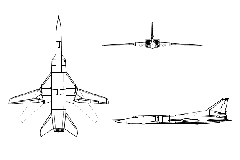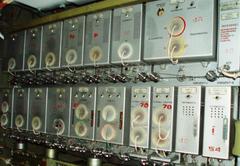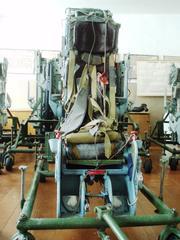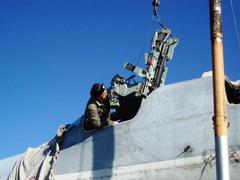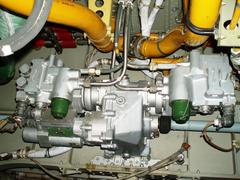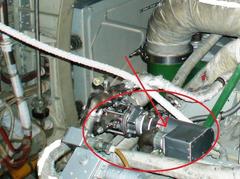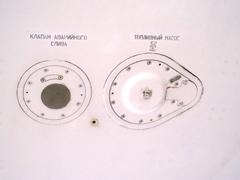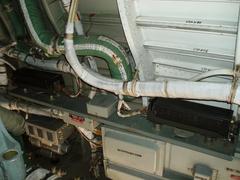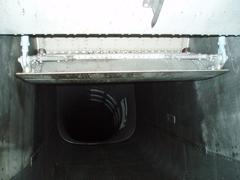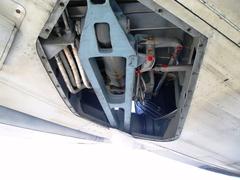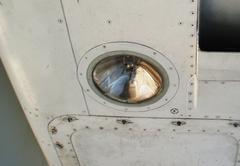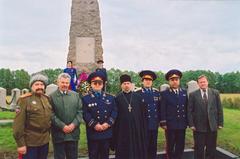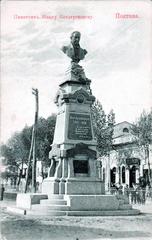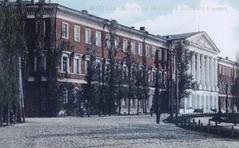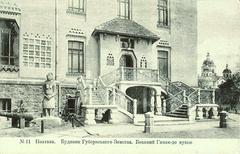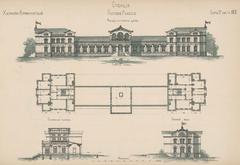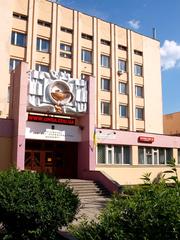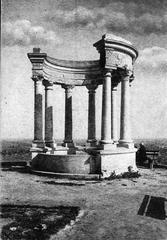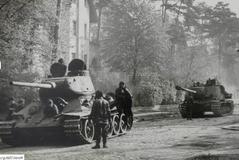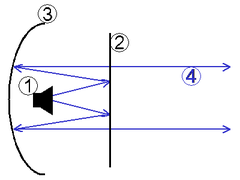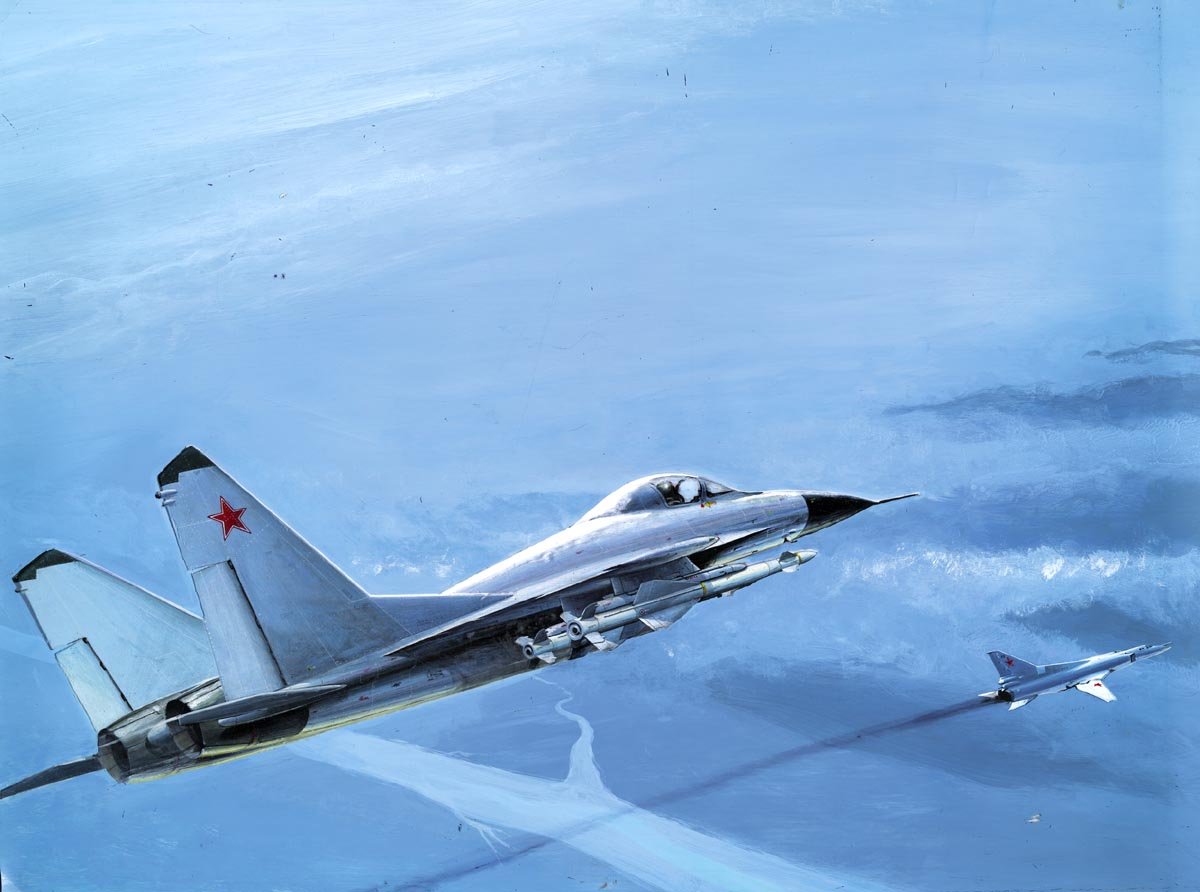
Tupolev Tu-22M Visiting Hours, Tickets, and Guide to Poltava Historical Sites
Date: 14/06/2025
Introduction to the Tupolev Tu-22M and Poltava Historical Sites
The Tupolev Tu-22M, known by NATO as the “Backfire,” is a supersonic, variable-geometry, long-range strategic and maritime strike bomber—a pinnacle of Soviet aerospace engineering and Cold War military doctrine. Developed in the late 1960s to address the limitations of its predecessor, the Tu-22 “Blinder,” the Tu-22M introduced significant advancements, such as variable-sweep wings and powerful Kuznetsov NK-25 engines, enabling speeds of up to Mach 2.05 and ranges exceeding 7,000 kilometers. The aircraft played a vital role in Soviet strategic deterrence and continues to be used in contemporary conflicts.
After the Soviet Union’s dissolution, Ukraine inherited a substantial number of Tu-22Ms. While most were dismantled under disarmament agreements, a select few have been preserved for public exhibition, notably at the Poltava Museum of Long-Range and Strategic Aviation and the State Aviation Museum in Kyiv. These museums offer aviation enthusiasts and history buffs a unique opportunity to experience Cold War aviation heritage up close, featuring not only the Tu-22M but also a broad collection of strategic aircraft and artifacts.
This comprehensive guide provides you with the historical background, technical overview, and practical visitor information necessary to plan your visit to these iconic sites, ensuring an informative and memorable experience (source; source; source).
Table of Contents
- Origins and Development of the Tupolev Tu-22M
- Technical Features and Capabilities
- Operational History
- Visiting the Tupolev Tu-22M Museums in Ukraine
- Visiting the Tu-22M3 Bomber at Poltava Museum: Hours, Tickets & History
- Practical Visitor Tips and FAQs
- Visuals and Media
- Additional Resources and Further Reading
- Conclusion and Call to Action
Origins and Development of the Tupolev Tu-22M
The Tu-22M was born out of the Soviet Union’s quest for a more capable strategic bomber in the 1960s, following operational shortcomings of the Tu-22 “Blinder” (airvectors.net; wikipedia.org). Under Andrei Tupolev’s leadership, the design shifted radically, incorporating variable-geometry wings to optimize performance for both high-speed dashes and long-range cruise. The first prototype took flight in 1969, and subsequent models, particularly the Tu-22M3, introduced improved engines and sophisticated avionics (aviamuseum.com.ua; airforce-technology.com).
Technical Features and Capabilities
The definitive Tu-22M3 variant measures 42.4 meters in length, with wings that sweep from 20° for takeoff to 65° for supersonic flight (airforce-technology.com). Powered by two Kuznetsov NK-25 turbofan engines, the aircraft achieves a maximum speed of Mach 2.05 and operational altitudes up to 14,000 meters. Its range is approximately 7,000 km, extendable via in-flight refueling. The Tu-22M3 can carry up to 24,000 kg of ordnance, including nuclear and conventional bombs, as well as Kh-22/Kh-32 cruise missiles, making it a formidable platform for both strategic and maritime strike missions (nationalinterest.org).
Operational History
Cold War Service
During the Cold War, the Tu-22M served as a key asset in Soviet strategic bombing and naval aviation, providing a significant deterrent with its long-range and missile capabilities (wikipedia.org).
Post-Soviet Era and Ukrainian Inheritance
Following the Soviet Union’s collapse in 1991, Ukraine inherited over 80 Tu-22Ms. Adhering to international disarmament agreements, most were dismantled, but a few have been preserved at museums such as Poltava and Kyiv (aviamuseum.com.ua).
Modern Russian Service and Recent Combat
Although production ended in 1993, the Tu-22M remains operational in the Russian military. It has been used in conflicts in Chechnya, Georgia, Syria, and Ukraine, where several have been lost to Ukrainian air defenses (airvectors.net; 19fortyfive.com).
Visiting the Tupolev Tu-22M Museums in Ukraine
Poltava Museum of Long-Range and Strategic Aviation
Located at the former Poltava-4 airbase, the Poltava Museum preserves two Tu-22M bombers, among other Cold War-era aircraft and missile systems (wikipedia.org). Visitors can explore authentic military equipment and learn about Ukraine’s aviation legacy.
- Visiting Hours: Tuesday to Sunday, 10:00 AM – 5:00 PM; closed Mondays.
- Tickets: Adults – 100 UAH; children/seniors – 50 UAH; group discounts available.
- Accessibility: Wheelchair accessible; guided tours available by request.
- Location: About 5 km from Poltava city center; accessible by taxi or local bus.
- Events: Hosts aviation-themed events and educational programs throughout the year.
State Aviation Museum in Kyiv
Kyiv’s State Aviation Museum features a comprehensive collection, including the first Tu-22M0 prototype (aviamuseum.com.ua). The museum offers a broader context for the evolution of Soviet and Ukrainian military aviation.
- Visiting Hours: Daily, 9:00 AM – 6:00 PM.
- Tickets: Adults – 80 UAH; students/seniors – 40 UAH.
- Accessibility: Public transport access; on-site parking available.
- Extra Attractions: Cold War exhibition areas and aviation workshops.
Visiting the Tu-22M3 Bomber at Poltava Museum: Hours, Tickets & History
Historical Context
The Tu-22M3, introduced in the early 1980s, marked a major leap in strategic aviation, capable of deep penetration missions and anti-ship operations using advanced missiles (The Aviationist). Poltava’s long-standing role as a strategic airbase makes it a historically significant site for the display of these aircraft (Wild Trips).
Strategic and Technological Significance
The Tu-22M3 combines variable-geometry wings, supersonic speed (up to Mach 1.88), and a payload capacity of 24,000 kg, supporting both strategic and tactical missions. Its modern relevance is demonstrated by continued use in Russian service and participation in recent conflicts (The Aviationist).
Visitor Experience
- Location: Museum is easily accessible from Poltava city center (Wild Trips).
- Hours: Typically 10:00 AM – 6:00 PM year-round, with extended hours in summer.
- Tickets: About 100 UAH for adults; discounts for students and seniors.
- Guided Tours: Led by former aviators or technicians, offering expert insights into aircraft operations and history.
- Photography: Permitted for personal use; some restrictions may apply—check with staff.
- Accessibility: Outdoor exhibits require walking; most main paths are paved, but some areas may be less accessible.
- Events: The museum occasionally offers special programs, aviation festivals, and opportunities to interact with former crew members (EPIS Think Tank).
Practical Visitor Tips
- Best Time to Visit: Spring and early autumn provide mild weather. Weekdays are less crowded.
- Language: Bilingual signage (Ukrainian/English); English-language tours recommended to book in advance.
- Nearby Attractions: Combine your museum visit with stops at Poltava’s Monument of Glory, the White Rotunda, and local literary museums.
- Amenities: On-site cafés and souvenir shops; local specialties like Poltava dumplings are available nearby.
- Safety: Poltava is generally safe; monitor local news for updates due to ongoing regional conflict.
- Accessibility: Museum is largely accessible, but some outdoor paths may be uneven.
Frequently Asked Questions (FAQ)
Q: Are guided tours available in English?
A: Yes, though advance booking is recommended for English-language tours, especially during peak seasons.
Q: Is the Tu-22M exhibit accessible for visitors with disabilities?
A: The museum is wheelchair accessible, with ramps and accessible restrooms. Some outdoor areas may be less navigable.
Q: Can I take photos?
A: Photography is encouraged for personal use. For commercial purposes, seek approval from museum staff.
Q: How can I get to the museum from Kyiv?
A: Take a train or bus to Poltava, then a local taxi or bus to the museum.
Q: Are there online resources or virtual tours?
A: The museum provides some online content and updates on its official website and social media.
Visuals and Media
For a richer experience, review high-resolution images and videos on the museums’ official sites and social media. Recommended alt tags for images: “Tupolev Tu-22M bomber at Poltava Museum,” “Tu-22M3 on display,” “Poltava historical sites aviation exhibit.”
Additional Resources and Further Reading
- Poltava Museum of Long-Range and Strategic Aviation
- Poltava Top Attractions Guide
- Tupolev Tu-22M Strategic Bomber – Airforce Technology
- Russia’s Tu-22M Bomber Overview – National Interest
- Tu-22M3 and Recent News – The Aviationist
- Poltava Museum – Wikipedia
- Operation Spider Web and AI – EPIS Think Tank
- Poltava Air Base Profile – Aviation Press
- Recent Developments and Drone Attacks – AP News
- Ukraine-Russia War, Bomber Losses – Foreign Policy
- Poltava Museum Visitor Info
Visitor Etiquette and Cultural Considerations
- Respect all posted signs and barriers.
- Do not climb on or touch the aircraft unless permitted.
- Dress appropriately for the weather and grounds.
- Engage with museum staff and guides for deeper insights.
Conclusion and Call to Action
Visiting the Tupolev Tu-22M exhibits at Poltava and Kyiv offers an immersive journey into Cold War history, aviation technology, and Ukraine’s strategic heritage. Use this guide to plan your trip, maximize your experience with guided tours, and explore nearby historical attractions. For the latest updates, special events, and interactive resources, follow the museums on social media and consider downloading the Audiala app for audio guides and travel assistance.
Witnessing the Tu-22M firsthand is not just a glimpse into the past—it’s a way to understand the enduring impact of aerospace innovation on global history.
